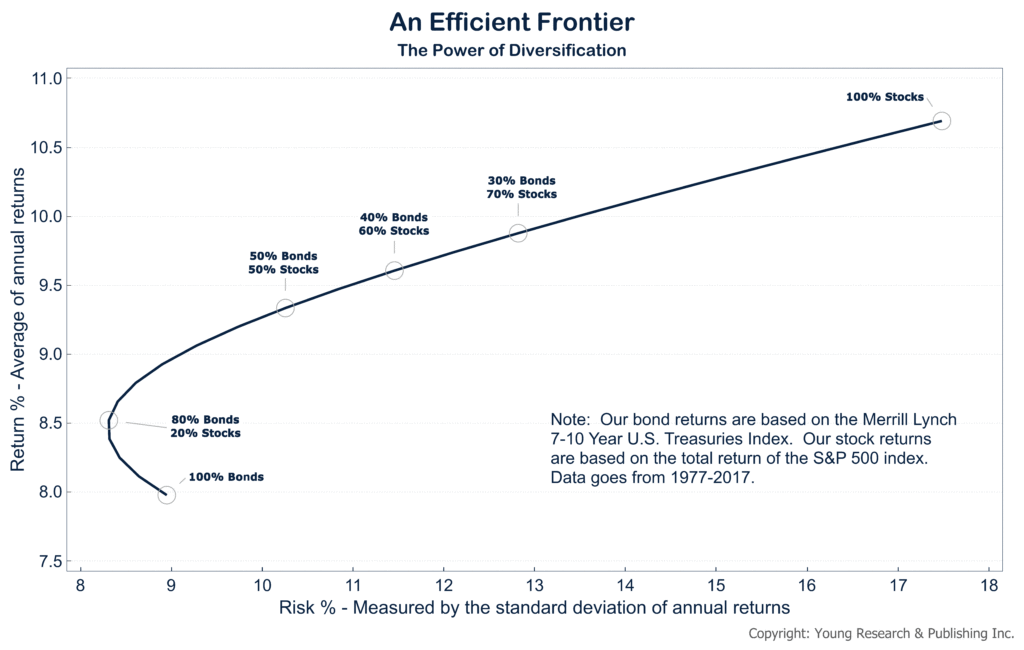
By batjaket @ Shutterstock.com
Diversification isn’t only a tool to minimize losses when assets fall in value, it has the power to actually increase your return while lowering risk. Here’s how I explained it in December of 2015 (with the chart and associated text updated to 2017):
Calculating the Efficient Frontier
You need to look at your asset deployment from the top down, focusing on diversification between stocks and bonds. My Efficient Frontier display shows you the power of diversification. Note the left-to-right uphill slanting curve that initiates with a position of 100% bonds and terminates with a position of 100% stocks. We have made our calculations using the Merrill Lynch 7-10 Year U.S. Treasuries Index and the S&P 500 total return index from Young Research for the period of 1977– 2017. We calculate the Efficient Frontier by using annual returns and assuming annual rebalancing.
Draw 1% per Quarter
Where is your best fit along an Efficient Frontier? To answer, you must first establish your ability to absorb risk in the hunt for returns. For decades I have written that in retirement, your target should be a 1% per quarter draw from your portfolio, and not a penny more. This does not mean, however, that you should not position yourself to potentially exceed 1% per quarter returns. Your actual return over any quarter will be controlled largely by the climate of the financial markets at the time, which neither you nor I control. And the climate itself will be determined by the stage of the economic and monetary cycles. I have studied these cycles over five decades and keep you updated regularly. The winter stage of the upside economic and monetary cycle is here, to be followed by a period of discomfort in the economy and the financial markets.
If you need help creating a well-diversified portfolio, fill out the form below. If you do, a trusted senior member of my family run investment counsel team will contact you. You will be offered a free, no-obligation portfolio review and an explanation of how we can help you achieve your investing goals.
Originally posted on Young’s World Money Forecast.

